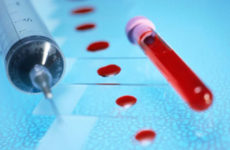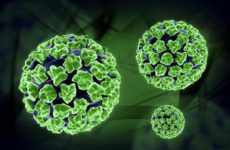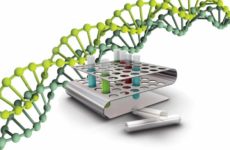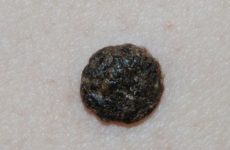According to statistics, about 70% of the world’s population are carriers of the human papillomavirus, and according to other sources – up to 95%. In some cases, the immune system itself destroys the virus, and the person does not even know about the infection.
It is much worse when symptoms appear and significantly affect the quality of life. In order to prevent the most serious consequences of virus activation – the development of oncological diseases – diagnostics and prompt treatment are required. A highly accurate diagnostic method is a PCR study.
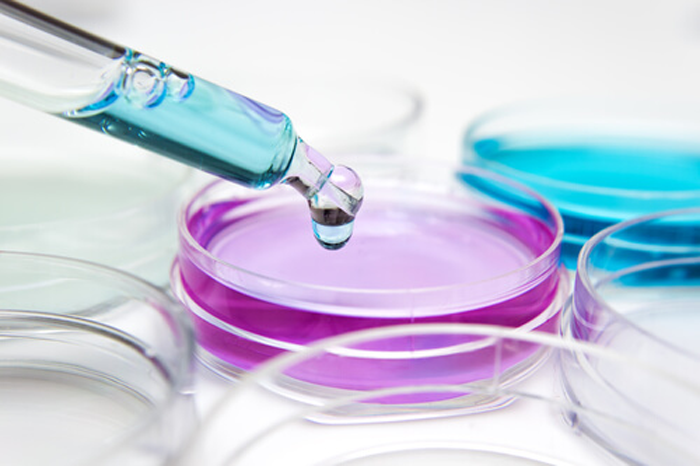
Содержание:
- 1 Polymerase chain reaction, typing (quantitative): what is it?
- 2 Efficiency of using the method for detecting human papillomavirus
- 3 Pros and cons of analysis
- 4 Preparing for diagnostics
- 5 How to take an analysis for a woman?
- 6 Deciphering the results of analyzes by the polymerase chain reaction method
- 7 Where can you get tested?
Polymerase chain reaction, typing (quantitative): what is it?
Papillomavirus is the causative agent of an infectious disease that is transmitted mainly through sexual contact. The virus penetrates from an infected person into a healthy body and can go unnoticed for a long time.
When immunity weakens (for example, with the flu, during pregnancy), the body’s defenses may not be enough, and then the virus is active: papillomas appear on the skin or mucous membranes – small outgrowths on the skin.
It would seem, how can small formations be dangerous? There are three types of HPV according to the degree of danger:
- With a low oncogenic risk.
- With an average oncogenic risk.
- with a high oncogenic risk.
The degree of oncogenicity, in fact, is the probability of the virus degenerating into cancer.
When strange growths appear, a person consults a doctor. Usually, after a visual examination, a specialist makes an assumption about papillomavirus, but on the basis of this, a diagnosis cannot be made. A number of analyzes and studies are assigned, among which PCR occupies a special place.
Polymerase chain reaction (PCR) is a modern reliable method of molecular genetic diagnostics, which allows to determine with high accuracy the presence of a pathogen in the body (in this case, HPV).
The method is based on studying the structure of DNA chains in one of the human biological media (blood, urine, saliva, smear ). In the laboratory, a specialist studies the sequence of DNA nucleotides and highlights areas in which the molecule is built “incorrectly”.
In other words, if the order of the nucleotides in the DNA chain is disturbed, there are foreign objects in it, and the doctor determines the DNA of the virus from these “broken” sections.
PCR is determined qualitatively or quantitatively. In the first case, “HPV positive” or “HPV negative” is written in the laboratory form – only its presence or absence is determined.
But a qualitative analysis is not always justified: if a virus with low carcinogenicity is present in the body, but does not bother a person in any way, a positive result will only scare him.
Much more informative and more justified is quantitative analysis, which shows not only the presence of HPV, but also its activity, as well as the strain of the virus, which can be used to determine whether there is a risk of oncology.
Efficiency of using the method for detecting human papillomavirus
To date, PCR is considered one of the most highly effective methods for diagnosing papillomavirus. The main advantage is that it allows you to determine the oncogenicity of the virus at the molecular level.
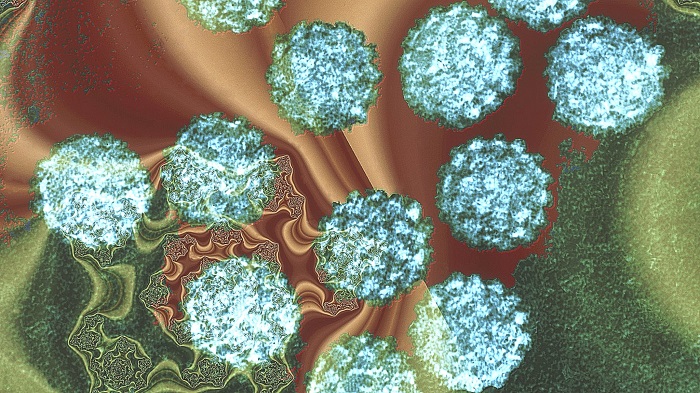
Using this method, HPV strains with high oncogenicity are detected even before the first symptoms appear, because the DNA of the pathogen is detected, and not traces of its presence.
PCR diagnostics allows you to determine:
- The presence of the virus in the body with maximum accuracy.
- The number of strains of the pathogen.
- Similar cell architectures of pathogenic particles.
In addition, deciphering the results does not take much time.
Pros and cons of analysis
The advantages of the analysis include:
- high specificity. That is, using this method, with a high probability, it is possible to separate the DNA of the pathogen from human DNA.
- High performance. In modern laboratory conditions, analysis and interpretation of results are available in a few hours.
- The versatility of the analysis. At the request of the patient, it is possible, on the basis of the collected biological material, to identify the causative agents of several diseases (for example, chlamydia and gonorrhea).
- High sensitivity. The results will be reliable even if the virus is in the incubation period or its amount is minimal. In this case, a huge advantage is the ability to immediately begin the fight against the virus and prevent its activation.
Along with the pros, there are also a few cons:
- The probability of getting a false positive result. This is one of the main drawbacks of the virus, but at the same time it has practically no negative consequences. For example, a virus has been detected, a course of treatment has been completed, but dead cells with the pathogen’s DNA still remain in the body. In this case, you need to re-analyze after 2-3 months.
- The probability of getting a false negative result. This drawback is the result of the patient’s negligent attitude to preparation, to analysis, or violation of the conditions for the collection and transportation of biomaterial by laboratory assistants or incorrect interpretation. This situation is more dangerous than a false positive result, because in this case, treatment is delayed.
It is for these reasons that it is recommended to undergo diagnostics only in trusted institutions, and some doctors insist on a re-examination or use additional diagnostic methods (for example, ELISA).
Preparing for diagnostics
Special preparation for diagnosis is not required.
For analysis, you can use urine, saliva, blood, but, as a rule, a smear study is used more often. Before passing the analysis, you need to follow a number of simple rules:
- Eliminate alcohol the day before the test.
- Refuse sexual intercourse 1-2 days before the appointed date.
- 1.5-2 hours before the material is taken, it is allowed to go to the toilet for the last time.
Before you go to the doctor, you need to follow the basic rules of hygiene.
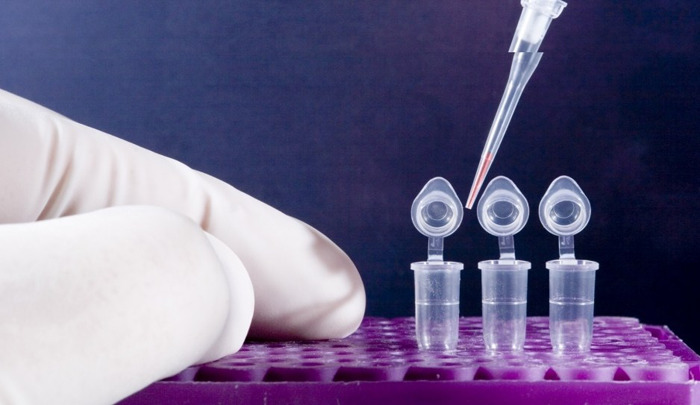
How to take an analysis for a woman?
The procedure for passing the analysis is similar to any gynecological examination. The woman is comfortably located in the gynecological chair, after which the doctor applies a special sterile solution to the cervix. Then, using a special brush, the gynecologist gently scrapes with rotational movements. The whole procedure takes no more than two minutes.
The resulting biomaterial is placed in a sterile tube and sent to the laboratory.
Deciphering the results of analyzes by the polymerase chain reaction method
The doctor will interpret the results. It makes no sense to try to see anything in the laboratory form on your own, since the designations can only be understood by a specialist.
The quantitative study is presented in the form of a table. The first column indicates the types of virus classes (for example, A9 – viruses with a high degree of oncogenicity), the second – the phrase “not detected” or “detected”. Find out also what HPV is, deciphering the results of the analysis
The best option is if all classes of viruses are not detected.
If one or more classes are found, the last row, Lg, is expressed as a score. The meanings of the number are as follows:
- Lg less than 3 – a small number of viral cells.
- Lg 3-5 – borderline, there is a risk of infection.
- Lg greater than 5 is the critical concentration of the virus.
After some time, the analysis is repeated to exclude false positive or false negative results. Based on these studies, a diagnosis is made and treatment is prescribed. See also material on the topic: HPV type 16, quantitative analysis, decoding .
Where can you get tested?
PCR diagnostics is carried out in the laboratory. When contacting the district polyclinic, a referral will be issued for examination in the laboratory at the polyclinic or to the antenatal clinic where this study is carried out.
Without a referral on your own initiative (for prevention) or with re-analysis after a while, you can independently contact any private laboratory or medical center where this service is provided.
The patient will be assigned a convenient time, told about the procedure and preparation for it, as well as the timing of the results. Typically, test results are ready the next day.
The cost of one analysis (for one strain of the virus) will cost about 200-300 rubles. A comprehensive examination will cost from 500 to 2000 rubles.
PCR research is one of the most popular and reliable tests for detecting the DNA of pathogenic microorganisms in the human body, making a diagnosis and prescribing treatment.
For the analysis of one examination may not be enough, therefore, after a while, repeated diagnostics will be required. Blood, urine, semen, saliva are suitable for PCR, but natural lubrication from the vagina or male urethra is most often used. The test results can be collected the very next day.



